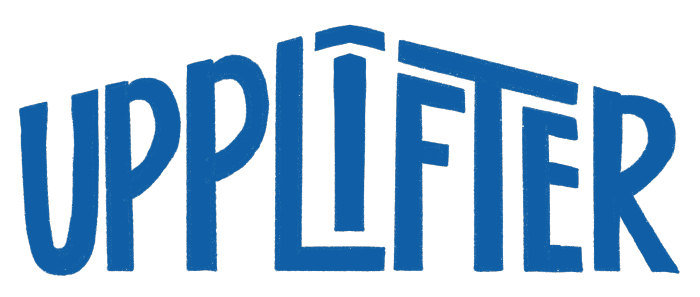Deep breathing is one of the quickest and most accessible forms of self-relaxation.
Whenever I struggle with a heavy bout of anxiety, stress, or obsessive thinking, I will turn to deep breathing to bring me back to my center.
Keeping our bodies in a calm state is essential in combating anxiety. If our bodies are always in a state of fight, flight, or freeze, it makes it nearly impossible to relieve the anxious thoughts and associated feelings.
So learning relaxation techniques that calm the body becomes pertinent in warding off any bouts of anxiety.
WHY DEEP BREATHING TECHNIQUES?
Breathing is something we have to do every day, whether we like it or not.
There is no choice in the matter. It’s as natural as any physical activity we perform, and it happens to be quite crucial to everything we do.
We can use it to help initiate deeper sleep, relieve tension, and promote mindfulness.
So why not use it to help us manage our anxiety?
Implementing healthy and proven deep breathing techniques can alleviate some of the pain and suffering that anxiety causes. It naturally calms down our sympathetic nervous system responsible for the fight, flight, or freeze response.
Deep breathing is a powerful and sometimes underutilized tool in our mental health toolbox.
5 DEEP BREATHING TECHNIQUES TO CALM YOUR ANXIETY
ABDOMINAL BREATHING
Abdominal breathing is also known as “Natural breathing” because it’s how newborn babies breathe. I call it belly breathing because you move your stomach rather than your chest, much like an infant. Humans naturally breathe through their bellies, but it’s when the fight or flight response kicks in that we begin to breathe through our chests, instead. This type of shallow, rapid breathing is sufficient during physical activity. Still, it limits the intake of oxygen and exhale of carbon dioxide necessary for our long term health. Below are tips for abdominal breathing.
- While keeping your shoulders relaxed, slowly breathe through your nose, taking in a normal amount of air. Place your hand on your belly and notice that it rises while your chest remains still.
- Silently count to three while closing your mouth.
- Softly exhale through your mouth while keeping your jaw relaxed.
- Take another break for a few more seconds.
- Repeat these steps for a few minutes until you notice that your body is more calm and relaxed.
BOX BREATHING
Box breathing, also known as square breathing, is a deep breathing technique used to take slower, deeper breaths. I first heard of this technique when a good friend told me that he uses it to calm himself down when he’s overthinking or stressing out. I began implementing it in my own life and found it to be quite helpful.
What does Box Breathing entail?
It’s pretty straightforward:
- Slowly Inhale for four seconds.
- Hold your breath for four seconds.
- Slowly exhale for four seconds.
- Hold your breath for four seconds.
I usually repeat this process three or four times in a row, but do what feels comfortable to you.
THE 4-7-8 TECHNIQUE
The 4-7-8 technique, also referred to as “relaxing breath,” is a technique geared towards reducing anxiety or getting better sleep. This technique is more limited in the scientific research department, but plenty of anecdotal evidence suggests that it works. I have personally tried this technique and found it helpful in calming my anxiety and stress levels. This technique required longer, rhythmic breathes supporting relaxing.
- Begin by Emptying the lungs of air
- Breathe in through the nose for 4 seconds
- Hold in breath for 7 seconds
- Forcefully exhale through the mouth for 8 seconds, making a “whoosh” sound as you do it.
- Repeat this cycle up to 4 times.
EQUAL BREATHING
Equal breathing is one of my go-to morning breathing techniques.
This technique stems from anxiety yoga practices.
It’s called “equal breathing” because you’re inhaling for the same amount of time as you’re exhaling.
You can practice equal breathing in any position, whichever is most comfortable for you.
- Inhale for four seconds (you can change the length to whatever is suitable for you).
- Then exhale for that same four-second count.
- Make sure your counts are the same.
- Repeat this process for a few minutes until you begin to feel calmer.
MEDITATION BREATHING
Meditation breathing is easy to remember and simple to apply. The primary focus of meditation breathing is to slow down your exhales. Once you become aware of your exhales and begin breathing out slowly, the inhales will automatically synch up as well. Follow the steps below.
- Breathe in and then exhale slowly.
- Keep focusing on your slow, steady, and gentle out-breath, like you’re blowing up a balloon.
- Remember that your in-breath will automatically lengthen as your out-breathe becomes longer
- Once you are in a rhythm, scan your body for areas where you’re still holding tension.
IN REVIEW
Deep breathing is something I rely on every day to get me through the rough patches of my stress. These techniques presented can be used throughout your day, but try to be mindful of which one(s) work better for you.
Give yourself time to incorporate these techniques into your life. I recommend writing out reminders on sticky pads and setting them throughout your home or car that says, “Remember to use deep breathing!”
As silly as it sounds, those little reminders go a long way.
Also, remember that learning how to properly breath has many benefits beyond just reducing stress and anxiety. So, taking the time to learn them can greatly improve your quality of life.
Latest posts by Brad Coreno (see all)
- 8 Proven Tips To Improve Your Communication Skills - April 29, 2022
- 5 Proven Ways To Manage Work-Related Anxiety - April 3, 2022
- 10 Steps To Develop A Growth Mindset - March 13, 2022
